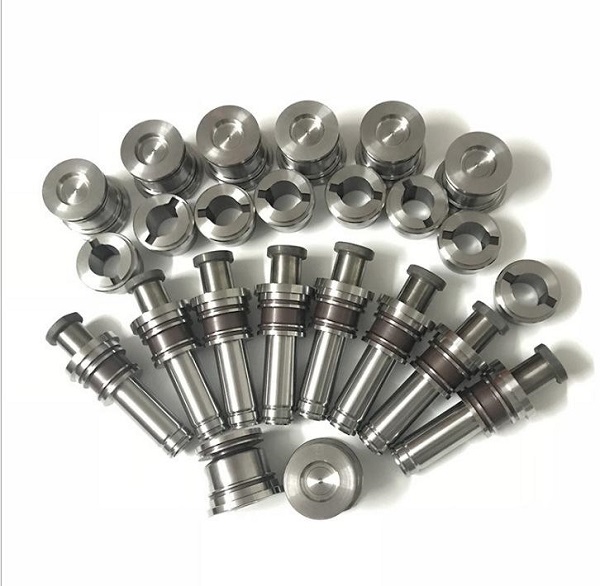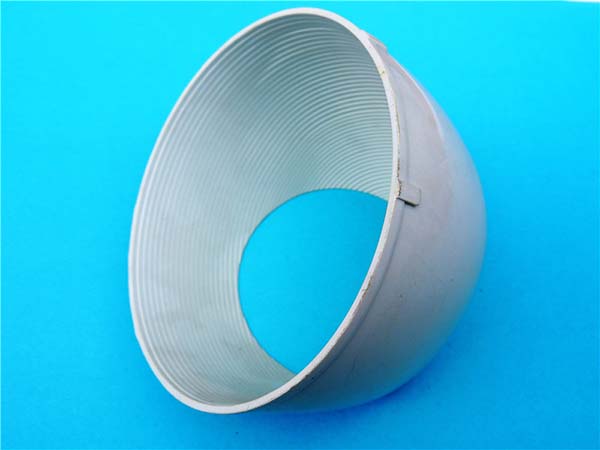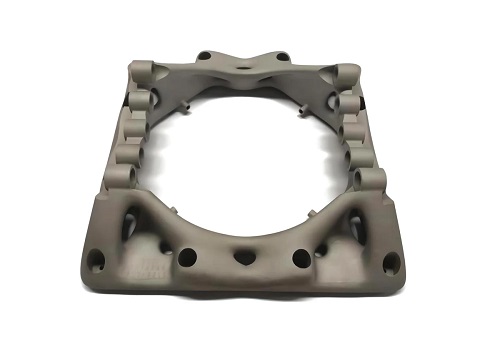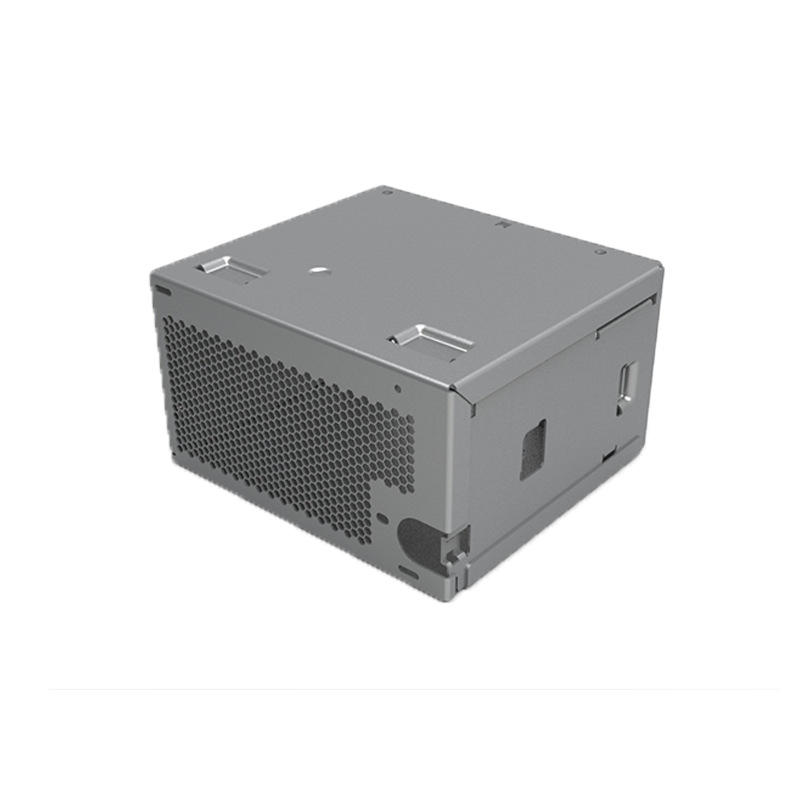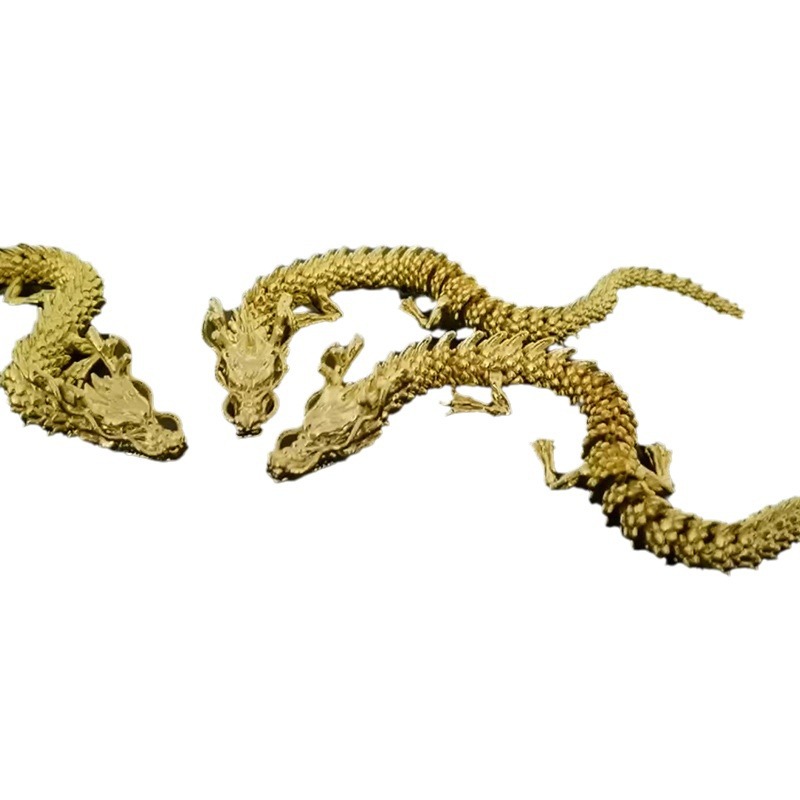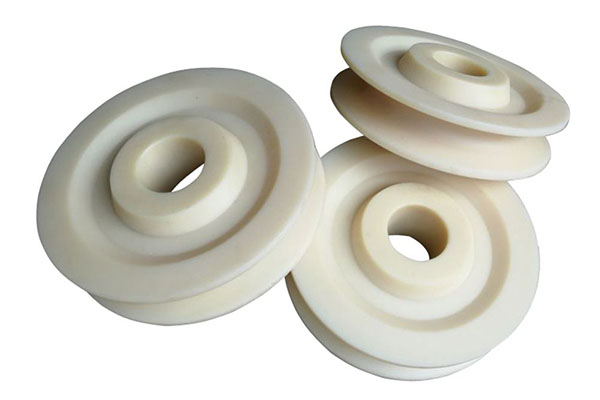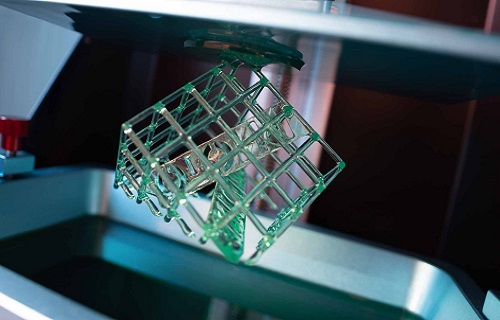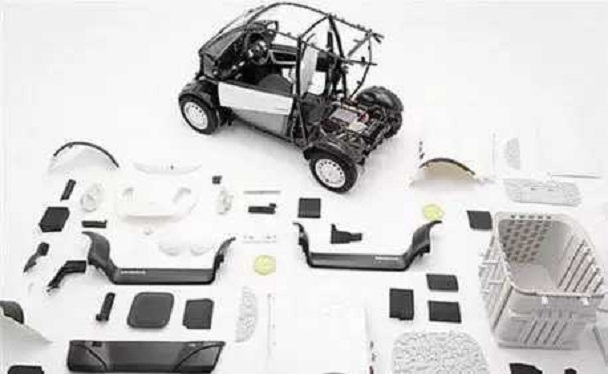Introduction
The Rising Star of 3D Printing in Production
In the rapidly evolving landscape of modern manufacturing, 3D printing has emerged as a revolutionary force, reshaping the very foundations of production processes across industries. Once considered a niche technology limited to prototyping and small - scale production, 3D printing, also known as additive manufacturing, has now firmly established itself as a mainstream solution with far - reaching implications for the future of production.
The growth of 3D printing in production has been nothing short of remarkable. According to a report by MarketsandMarkets, the global 3D printing market size is expected to grow from USD 15.3 billion in 2022 to USD 62.1 billion by 2027, at a compound annual growth rate (CAGR) of 32.3% during the forecast period. This exponential growth is a testament to the increasing adoption of 3D printing technology by manufacturers worldwide.
One of the key factors driving the rise of 3D printing in production is its ability to overcome many of the limitations associated with traditional manufacturing methods. Traditional manufacturing often relies on subtractive processes, where material is removed from a larger block to create the desired shape. This can be wasteful, time - consuming, and costly, especially when producing complex geometries. In contrast, 3D printing builds objects layer by layer from a digital model, using only the necessary amount of material. This not only reduces material waste but also enables the creation of intricate designs that would be impossible or extremely difficult to achieve with traditional techniques.
2. How 3D Printing Manufacturers Are Transforming Production
2.1 Customization and Personalization
In today's consumer - centric market, the demand for customized and personalized products has skyrocketed. Consumers no longer want to settle for mass - produced, one - size - fits - all items. They desire products that reflect their unique personalities, needs, and styles. 3D printing manufacturers are uniquely positioned to meet this growing demand.
Take the example of the footwear industry. Adidas, in collaboration with Carbon, a leading 3D printing technology company, has been producing 3D - printed midsoles for its running shoes. These midsoles are customized to the wearer's gait, weight, and running style, providing a personalized cushioning experience. By using 3D printing, Adidas can produce these customized midsoles at scale, without the need for traditional mass - production molds. This not only allows for greater customization but also enables faster production times and reduced waste.
Another notable example is in the dental industry. Candid, an orthodontic company, partnered with Carbon to 3D - print highly customized clear teeth aligner models. Using Carbon's digital light synthesis (DLS) technology and L1 3D printer, Candid can create aligners that are tailored to each patient's unique dental structure. This personalized approach to orthodontics has revolutionized the industry, providing patients with a more comfortable and effective treatment option.
The market data also supports the growing trend of customization and personalization in 3D printing. According to a report by Grand View Research, the global customized 3D printing market size was valued at USD 3.8 billion in 2020 and is expected to expand at a compound annual growth rate (CAGR) of 24.5% from 2021 to 2028. This growth is driven by the increasing demand for personalized products in various industries, including healthcare, consumer goods, and automotive.
2.2 Complex Design Realization
One of the most significant advantages of 3D printing is its ability to bring complex designs to life. Traditional manufacturing methods often face limitations when it comes to creating intricate geometries, sharp angles, or internal structures. These limitations are due to factors such as the need for molds, the use of subtractive manufacturing processes, and the physical constraints of the manufacturing equipment.
3D printing, on the other hand, is not bound by these limitations. It allows designers to create highly complex and innovative designs that were previously impossible or extremely difficult to manufacture. For Yigu Technology example, in the aerospace industry, 3D - printed parts often feature complex internal lattice structures. These structures are designed to optimize strength - to - weight ratios, reducing the weight of the components while maintaining their structural integrity. A study by NASA found that 3D - printed rocket engine parts with complex internal cooling channels could improve engine performance by up to 30% compared to traditional manufacturing methods.
The automotive industry is also leveraging 3D printing to create complex designs. McLaren, a renowned British automotive manufacturer, has used 3D printing to produce lightweight, high - strength components for its Formula 1 race cars. These components, such as engine parts and suspension components, feature complex geometries that are designed to improve aerodynamics and performance.
The development of 3D design software has also played a crucial role in enabling complex design realization. Software such as Autodesk Fusion 360, SolidWorks, and Rhino 3D allows designers to create and manipulate 3D models with ease. These software tools offer a wide range of features, including parametric design, generative design, and simulation capabilities. Parametric design allows designers to create models based on a set of parameters, which can be easily modified to create variations of the design. Generative design, on the other hand, uses algorithms to generate multiple design options based on a set of design goals and constraints. Simulation capabilities allow designers to test the performance of their designs before they are printed, reducing the need for physical prototypes and saving time and cost.
2.3 Cost - Efficiency in Small - Batch Production
When it comes to small - batch production, 3D printing offers significant cost - efficiency advantages over traditional manufacturing methods. Traditional manufacturing often involves high upfront costs, such as tooling and mold - making. These costs can be prohibitively expensive for small - batch production runs, making it difficult for companies to justify the investment.
3D printing, on the other hand, eliminates the need for tooling and molds in most cases. This means that the upfront costs are significantly reduced, making it a more cost - effective option for small - batch production. To illustrate this, let's consider a case study of a small - scale electronics manufacturer that wants to produce 500 units of a custom - designed plastic housing for a new product.
| Manufacturing Method | Mold Cost | Unit Material Cost | Total Material Cost for 500 units | Total Cost (Mold + Material) |
| Traditional Injection Molding | $50,000 | $5 | $2,500 | $52,500 |
| 3D Printing (FDM with PLA) | $0 | $10 | $5,000 | $5,000 |
As the table above shows, the cost of traditional injection molding for a small - batch production run of 500 units is much higher than that of 3D printing. The high mold cost in traditional injection molding makes it uneconomical for small - scale production. In contrast, 3D printing has no mold cost, and while the unit material cost may be higher in some cases, the overall cost for small - batch production is significantly lower.
Another factor that contributes to the cost - efficiency of 3D printing in small - batch production is reduced material waste. Traditional manufacturing methods often involve subtractive processes, where material is removed from a larger block to create the desired shape. This can result in a significant amount of material waste. 3D printing, on the other hand, is an additive process that only uses the necessary amount of material, reducing waste and saving costs.
2.4 Reducing Time - to - Market
In today's fast - paced business environment, time - to - market is a critical factor for the success of a product. The ability to bring a product to market quickly can give a company a competitive edge, allowing it to capture market share and generate revenue sooner. 3D printing can significantly reduce the time - to - market for products by enabling rapid prototyping and shortening the production cycle.
In the traditional product development process, creating a physical prototype often involves multiple steps, including design, tooling, and manufacturing. These steps can be time - consuming and costly, especially if there are design changes or iterations. With 3D printing, a physical prototype can be created directly from a digital model in a matter of hours or days, depending on the complexity of the design. This allows designers and engineers to quickly test and validate their ideas, make design improvements, and iterate on the prototype.
For Yigu Technology example, a consumer product company that wants to launch a new product may take several months to develop a prototype using traditional manufacturing methods. This includes the time spent on designing the product, creating the necessary molds or tooling, and manufacturing the prototype. With 3D printing, the company can create a prototype in a matter of days, allowing them to get feedback from potential customers and make design adjustments more quickly.
3D printing also streamlines the production process. Once the design is finalized, the product can be printed directly, without the need for additional tooling or setup. This reduces the lead time for production and allows the company to start manufacturing and shipping the product sooner. A study by McKinsey found that companies that use 3D printing for production can reduce their time - to - market by up to 50% compared to traditional manufacturing methods.
3. Applications of 3D Printing in Different Industries
3.1 Aerospace
The aerospace industry has been at the forefront of adopting 3D printing technology due to its unique requirements for lightweight, high - strength components. 3D printing allows aerospace manufacturers to produce parts with complex geometries that are not only stronger but also significantly lighter than their traditionally manufactured counterparts.
One of the most prominent examples is the use of 3D - printed engine components. Companies like SpaceX have been using 3D printing to manufacture rocket engine parts, such as combustion chambers and injector heads. These 3D - printed parts are made from high - temperature - resistant alloys and feature complex internal cooling channels that are designed to improve engine performance and efficiency. By using 3D printing, SpaceX has been able to reduce the number of parts in its rocket engines, simplify the manufacturing process, and improve the overall reliability of the engines.
Another area where 3D printing is making a significant impact in the aerospace industry is in the production of aircraft interiors. 3D - printed cabin components, such as armrests, storage bins, and air vents, can be customized to meet the specific needs of airlines and passengers. These components can be designed to be lightweight, which helps to reduce the overall weight of the aircraft and improve fuel efficiency. Additionally, 3D - printed interiors can be produced more quickly and at a lower cost than traditional manufacturing methods, allowing airlines to update and customize their aircraft interiors more frequently.
The use of 3D printing in the aerospace industry is also contributing to the development of new materials and manufacturing processes. Researchers are exploring the use of advanced materials, such as carbon fiber - reinforced polymers and metal matrix composites, in 3D printing to create even stronger and lighter components. In addition, new 3D - printing techniques, such as electron beam melting and direct metal laser sintering, are being developed to improve the quality and performance of 3D - printed parts.
3.2 Automotive
In the automotive industry, Yigu Technology 3D printing is revolutionizing the way vehicles are designed, prototyped, and manufactured. It offers several key advantages that are driving its increasing adoption.
3.2.1 Component Manufacturing
Automotive manufacturers are using 3D printing to produce a wide range of components, from small brackets and connectors to large structural parts. For instance, BMW has been using 3D printing to manufacture aluminum alloy brake calipers. These 3D - printed calipers are not only lighter than traditional calipers but also offer improved performance due to their optimized design. The use of 3D printing allows for the creation of complex internal structures that enhance the strength - to - weight ratio of the calipers.
3.2.2 Customization and Aftermarket Accessories
3D printing enables car owners to customize their vehicles with unique accessories. Companies like Shapeways offer a platform where customers can design and order 3D - printed automotive accessories, such as custom - designed shift knobs, interior trim pieces, and exterior body kits. This level of customization was previously difficult to achieve without high costs and long lead times. In the aftermarket, 3D printing also allows for the production of replacement parts that are no longer available from the original manufacturer. This can be a cost - effective solution for classic car owners and enthusiasts who need to repair or restore their vehicles.
3.2.3 Design Iteration and Prototyping
During the design phase, 3D printing accelerates the process of creating prototypes. Ford Motor Company, for Yigu Technology example, uses 3D printing to quickly produce full - scale models of new vehicle designs. These prototypes can be used for aerodynamic testing, ergonomic evaluations, and design reviews. By reducing the time and cost of prototyping, automotive designers can iterate on their designs more quickly, leading to better - designed and more innovative vehicles. A study by the University of Michigan found that 3D printing can reduce the time to produce a prototype in the automotive industry by up to 75%, allowing for more design iterations and improvements.
3.3 Healthcare
The healthcare industry is experiencing a paradigm shift with the integration of 3D printing technology, leading to significant improvements in patient care and medical research.
3.3.1 Customized Medical Devices
3D printing has enabled the production of highly customized medical devices tailored to individual patients. In orthopedics, companies like Stryker use 3D printing to create patient - specific implants. These implants are designed to fit the unique anatomy of each patient, improving the success rate of surgeries and reducing recovery times. For example, a 3D - printed hip implant can be customized to match the patient's bone structure, providing a better fit and reducing the risk of implant failure.
3.3.2 Prosthetics
The field of prosthetics has been greatly transformed by 3D printing. Organizations like e - NABLE use 3D - printed prosthetics to provide affordable and customizable limb replacements for amputees. These prosthetics can be designed to fit the patient's residual limb precisely, improving comfort and functionality. Additionally, 3D - printed prosthetics can be more aesthetically pleasing, as they can be customized to match the appearance of the patient's natural limb. A report by the Rehabilitation Engineering and Assistive Technology Society of North America (RESNA) found that 3D - printed prosthetics are often more affordable than traditional prosthetics, with costs sometimes as low as 10% of the cost of traditional models, making them more accessible to patients in need.
3.3.3 Surgical Models
Surgeons are using 3D - printed models of patient anatomy to plan complex surgeries. These models provide a physical representation of the patient's internal structures, allowing surgeons to practice the procedure, anticipate potential challenges, and develop optimal surgical strategies. For example, in neurosurgery, 3D - printed models of the brain and surrounding blood vessels can help surgeons plan tumor removal surgeries more effectively, reducing the risk of complications. A study published in the Journal of Neurosurgery found that the use of 3D - printed models in neurosurgery led to a 30% reduction in surgical time and a 20% improvement in surgical accuracy.
3.3.4 Drug Development
In drug development, 3D printing is being used to create customized drug delivery systems and 3D - printed tissue models for drug testing. Companies like Aprecia Pharmaceuticals have developed 3D - printed pills with controlled - release properties. These pills can be customized to deliver the right amount of medication at the right time, improving the effectiveness and safety of drugs. Additionally, 3D - printed tissue models, such as liver and heart tissue, can be used to test the efficacy and toxicity of new drugs, reducing the need for animal testing and accelerating the drug development process.
3.4 Consumer Goods and Fashion
The consumer goods and fashion industries are also leveraging 3D printing to create innovative products and enhance the consumer experience.
3.4.1 Innovative Design
3D printing allows designers in the consumer goods and fashion industries to bring their most creative ideas to life. In fashion, designers can create intricate and unique clothing designs that would be impossible to produce with traditional manufacturing methods. For example, Dutch designer Iris van Herpen is known for her avant - garde 3D - printed fashion collections. Her designs feature complex geometric patterns and organic shapes that are printed using advanced 3D - printing techniques. These designs not only push the boundaries of fashion but also showcase the potential of 3D printing in creating truly unique and artistic products.
3.4.2 Personalization
Consumers today are increasingly demanding personalized products, and 3D printing makes this possible in the consumer goods and fashion industries. In the eyewear industry, companies like Warby Parker are exploring 3D - printed frames that can be customized to fit the unique facial features of each customer. This level of personalization ensures a better fit and more comfortable wearing experience. In addition, consumers can choose from a wide range of colors, materials, and design elements to create their own unique pair of glasses.
3.4.3 Small - Batch Production
For small - scale fashion designers and consumer goods manufacturers, 3D printing offers a cost - effective solution for small - batch production. It eliminates the need for expensive tooling and allows for quick production runs. This is particularly beneficial for emerging designers who may not have the resources to invest in large - scale production. A small - scale jewelry designer can use 3D printing to produce a limited edition collection of unique jewelry pieces. The designer can quickly iterate on the designs, produce small batches of each design, and test the market demand without the high costs associated with traditional manufacturing methods.
6. Conclusion
In Yigu Technology conclusion, 3D printing manufacturers are playing a pivotal role in shaping the future of production across a wide range of industries. The technology they employ and develop has brought about a paradigm shift in the way products are designed, prototyped, and manufactured.
From enabling customization and personalization that caters to the unique demands of consumers, to realizing complex designs that were once thought to be impossible with traditional manufacturing methods, 3D printing has proven to be a game - changer. It has also demonstrated significant cost - efficiency in small - batch production and has drastically reduced the time - to - market for products, giving companies a competitive edge in the fast - paced global market.
The applications of 3D printing in industries such as aerospace, automotive, healthcare, and consumer goods and fashion are just the beginning. As the technology continues to advance, we can expect to see even more innovative uses and applications in the future. For example, in the construction industry, 3D - printed buildings could become more common, offering faster construction times, reduced waste, and the ability to create unique architectural designs. In the food industry, 3D - printed food could provide customized nutrition and unique culinary experiences.
FAQs
1. What are the main advantages of 3D printing in production?
The main advantages include customization and personalization, the ability to realize complex designs, cost - efficiency in small - batch production, and reduced time - to - market. It allows for the creation of products tailored to individual needs, brings innovative designs to life, saves costs for small production runs, and gets products to market faster.
2. In which industries is 3D printing most commonly used?
3D printing is most commonly used in aerospace, automotive, healthcare, and consumer goods and fashion industries. In aerospace, it's used for manufacturing lightweight and high - strength components; in automotive for prototyping, component manufacturing, and customization; in healthcare for customized medical devices, prosthetics, surgical models, and drug development; and in consumer goods and fashion for innovative design, personalization, and small - batch production.
3. What challenges does 3D printing face in widespread adoption?
Challenges include high equipment and material costs, limited material options, issues with product quality and consistency, and concerns over intellectual property rights. These factors can limit the accessibility and reliability of 3D printing technology, although ongoing research and development aim to address them.

